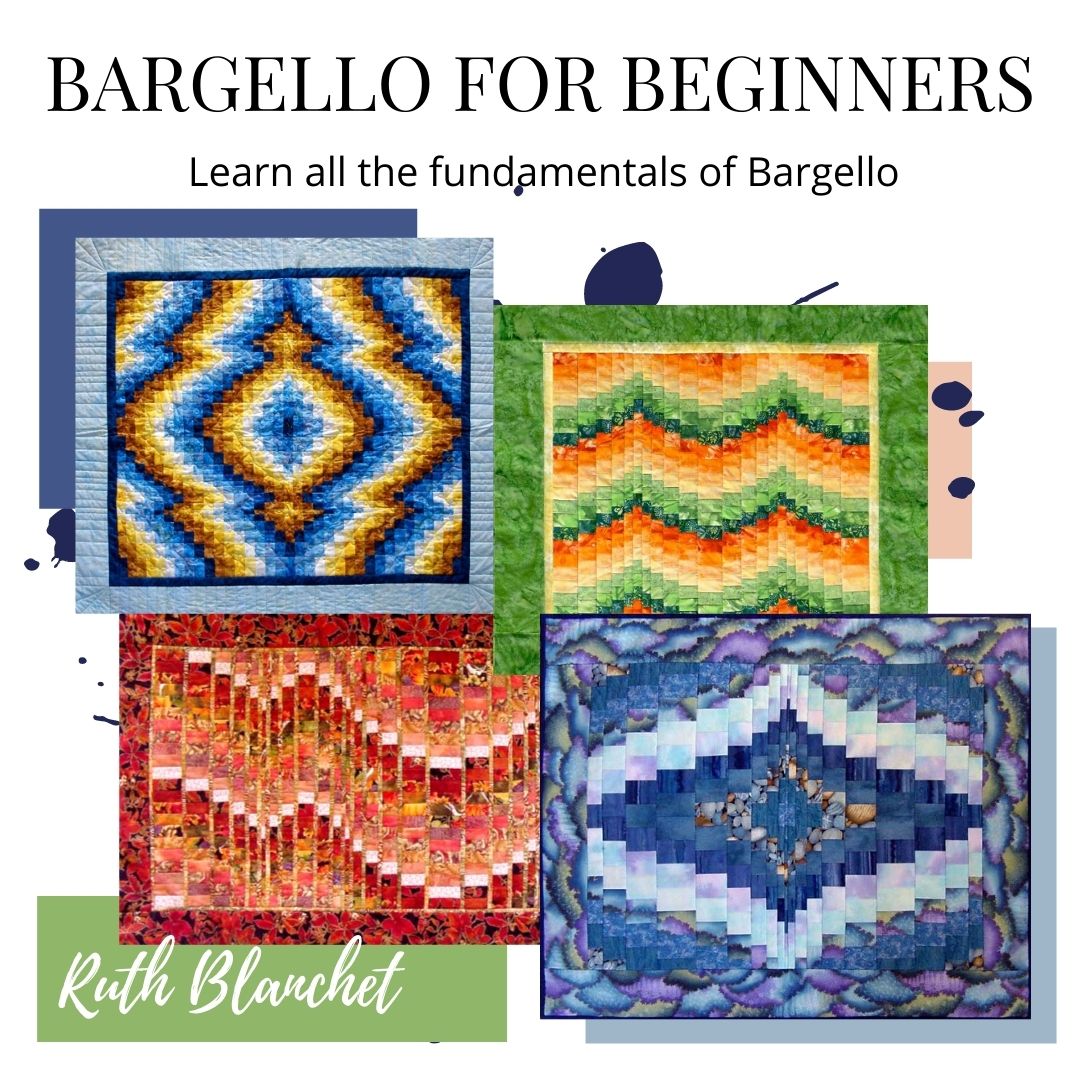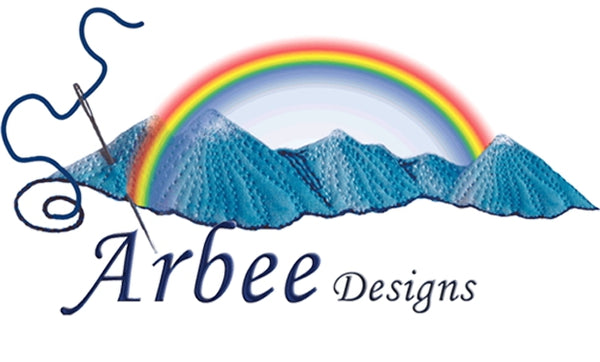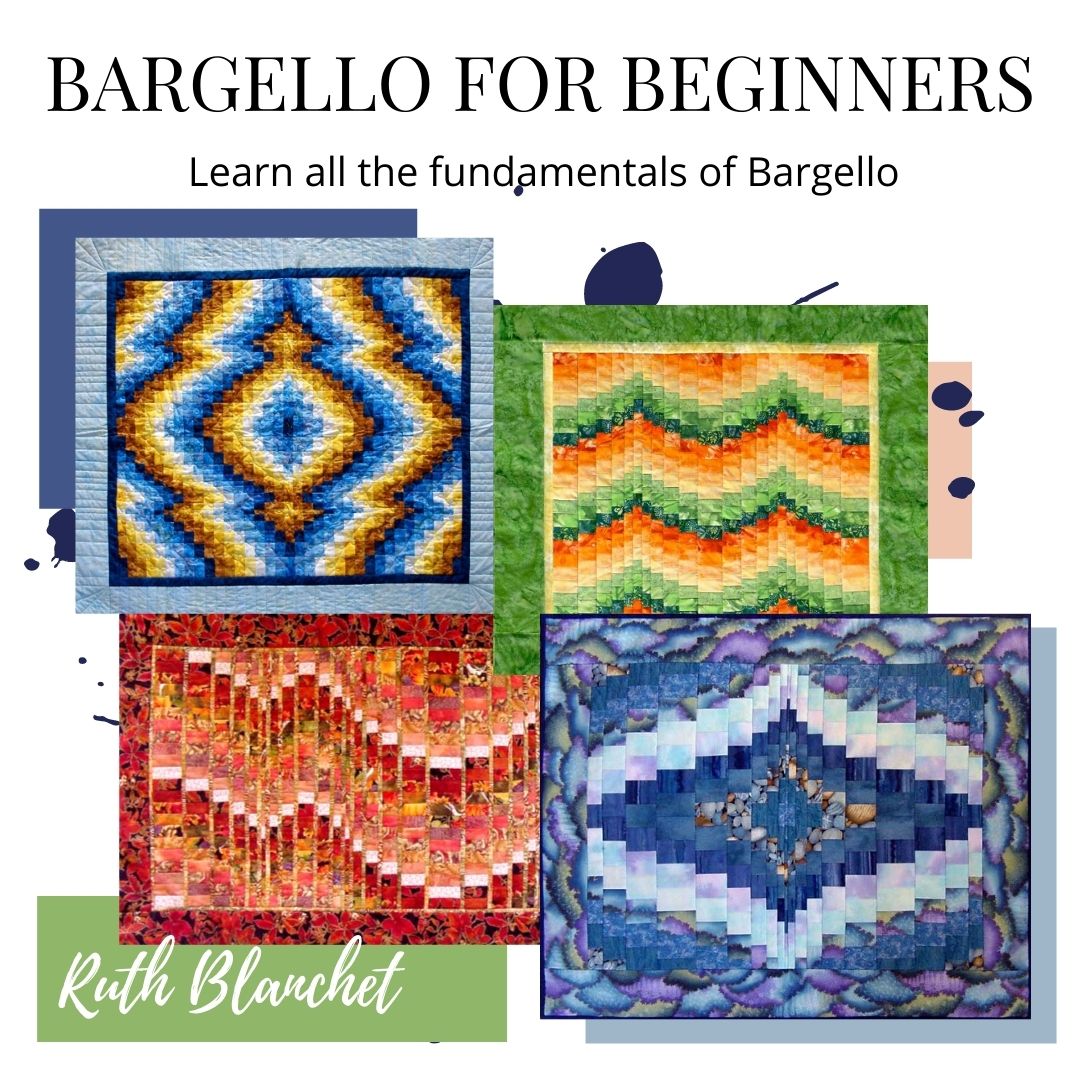
- Description
- Requirements
Dive into the vibrant world of Bargello quilting and master its mesmerizing patterns! In this hands-on workshop, you'll create four stunning samples, each showcasing a unique palette of seasonal colors. Prefer a cohesive look? Combine your samples into one striking quilt with a unified color scheme. Whether you're experimenting with seasonal shades or designing a single masterpiece, this is the perfect opportunity to explore the captivating art of Bargello.
Introducing "Bargello Seasons", the perfect beginner's class for anyone looking to master the art of Bargello quilting! In this course, you'll learn all the foundational Bargello techniques while creating four stunning seasonal samples, each showcasing a unique color palette. You can choose to celebrate each season individually or combine the samples to create one impressive large quilt.
The class covers essential techniques such as staggered seams, matching seams, fractured strips, and quilt-as-you-go methods, giving you the skills to tackle any Bargello project with confidence. Whether you're new to quilting or simply want to refine your skills, "Bargello Seasons" offers the perfect balance of creativity and learning.
Note: Once purchased, you can access the class data any time, 24 hours a day and you get immediate access. (if you don't have an account we suggest you sign up for one prior to purchase)
The four samples are also available as individual patterns.
Fabric
Each quilt requires extra fabric for borders, the amount depending on your choice of border style. Lesson One will contain a complete discussion of appropriate fabric types. If you have a large stash, you should be able to find what you need right at home since individual yardage requirements are small. Individual pieces measure 25" - 36" wide.
Batting and backing – Again this depends on the border style, but to give you an idea, my quilts used a total of 40" x 105"
Lesson One: Spring
- SEVEN spring coloured fabrics - minimum of 6" full width OR fat quarter of each colour
Lesson Two: Summer
- NINE summer coloured fabrics - minimum of 6" full width OR fat quarter of each colour
Lesson Three: Autumn
- ELEVEN autumn coloured fabrics - minimum of 4" full width OR fat eighth of each colour
- ONE fracture fabric - 1/2 yard
Lesson Four: Winter
- EIGHT winter coloured fabrics - minimum of 6" full width OR fat quarter of each colour
Other Supplies
- sewing machine and accessories
- walking foot and/or darning recommended
- cutting board, rotary cutter and rulers (long ruler and large square ruler are ideal)
- scissors
- fine pins (I use wedding and lace pins)
- neutral thread for piecing
- threads suitable for quilting
- seam ripper or small sharp pointed scissors for unpicking
- topstitching or metallic needle (optional)
- hand stitching needles
- quilters pencil or fade-away pen
- safety pins
- sandwich sample made from two pieces of fabric with batting sandwiched between and basted together (to practice free-motion quilting)
- baking (parchment) paper or Teflon sheet
- iron and ironing mat or ironing board
- design board or wall would be useful
- card or paper
- glue
- pen or pencil
- fine point marker (e.g., Sharpie)
- graph paper (optional)





